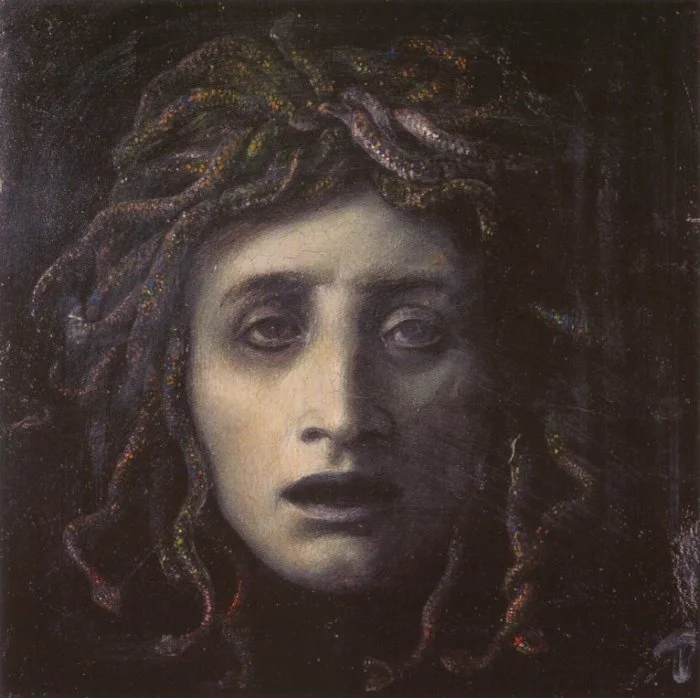 Image 1 of 1
Image 1 of 1


Medusa in the Mirror of Art History: Gaze, Power, and the Serpentine Divine
Date TBC
Medusa, one of the most compelling female figures in Greek mythology, represents a complex archetype that intertwines beauty, power, and terror.
Cursed to have snakes for hair and a gaze that turns onlookers to stone, her stare is not just a weapon but a profound symbol of female agency, an active gaze that looks back at the viewer, disrupting the traditional dynamic where women are merely objects of the male gaze.
This reversal challenges the power structures embedded in art and society by making Medusa the subject who controls and petrifies the observer. The snakes atop her head further amplify her connection to primal forces of nature, symbolizing both danger and transformative rebirth, reflecting the dual nature of femininity as both creative and destructive.
Over centuries, Medusa’s image has evolved from a monstrous figure to a powerful feminist icon in art history, representing resistance against oppression, the reclaiming of female power, and the enduring tension between attraction and fear. Her gaze, both captivating and petrifying, continues to fascinate artists and scholars, making Medusa a timeless symbol of the potent, multifaceted nature of female identity and strength
Image Arnold Böcklin, Medusa, c. 1878, Germanisches Nationalmuseum, Nuremberg, Germany.
Date TBC
Medusa, one of the most compelling female figures in Greek mythology, represents a complex archetype that intertwines beauty, power, and terror.
Cursed to have snakes for hair and a gaze that turns onlookers to stone, her stare is not just a weapon but a profound symbol of female agency, an active gaze that looks back at the viewer, disrupting the traditional dynamic where women are merely objects of the male gaze.
This reversal challenges the power structures embedded in art and society by making Medusa the subject who controls and petrifies the observer. The snakes atop her head further amplify her connection to primal forces of nature, symbolizing both danger and transformative rebirth, reflecting the dual nature of femininity as both creative and destructive.
Over centuries, Medusa’s image has evolved from a monstrous figure to a powerful feminist icon in art history, representing resistance against oppression, the reclaiming of female power, and the enduring tension between attraction and fear. Her gaze, both captivating and petrifying, continues to fascinate artists and scholars, making Medusa a timeless symbol of the potent, multifaceted nature of female identity and strength
Image Arnold Böcklin, Medusa, c. 1878, Germanisches Nationalmuseum, Nuremberg, Germany.